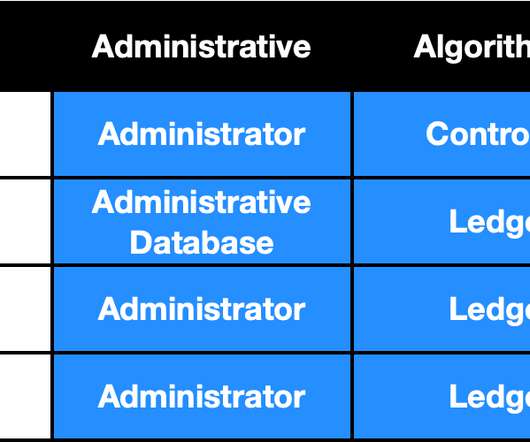The Architecture of Identity Systems
Phil Windley
SEPTEMBER 28, 2020
Summary: The architecture of an identity system has a profound impact on the nature of the relationships it supports. Introductory note: I recently read a paper from Sam Smith, Key Event Receipt Infrastructure , that provided inspiration for a way to think about and classify identity systems. Identity Architectures.















Let's personalize your content